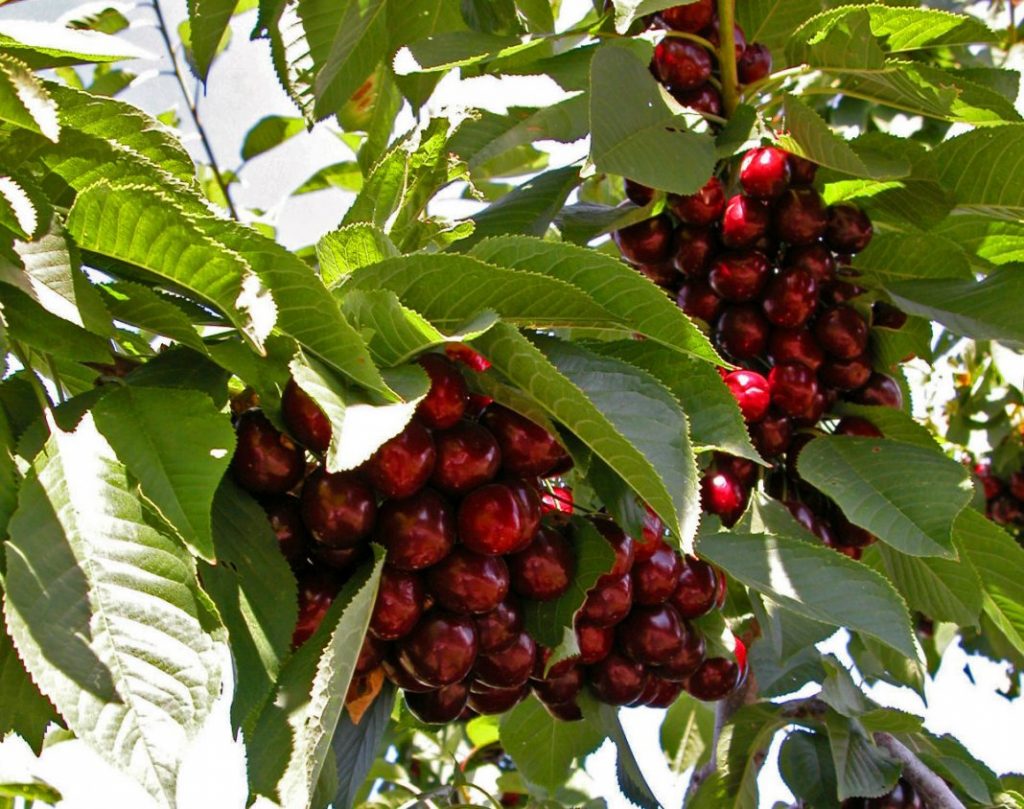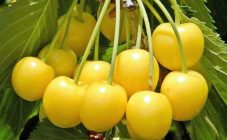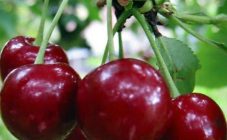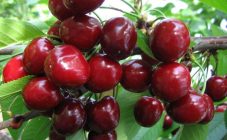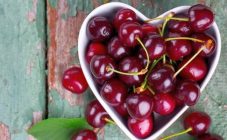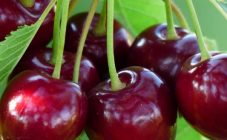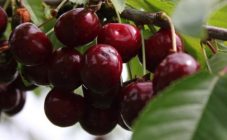Content:
Sweet cherry is one of the favorite berries for a true gardener. Large and sweet, but at the same time extremely susceptible to temperature changes, it is grown in all corners of our vastness. So the gardeners in the Urals decided to try their luck and grow cherry fruits. The cultivation of cherries in the Urals, planting and caring for them is not an easy task, but the enthusiast V. A. Sheremetyev proved that this idea is quite feasible in the middle lane. Before planting, you just need to carefully choose the place and time, and then carefully look after the seedlings. Then the sweet cherry will disfigure richly and bestow upon its owner generous fruits.
General information about culture
Not all sweet cherries grow in the Urals, only some varieties can take root in this climatic zone. Due to the fact that the culture does not shine with the talent of self-pollination, at least three varieties must be present on the plot of land, which will increase the likelihood of successful pollination.
After that, others were presented, developed at the Pavlovsk scientific station. The greatest demand is observed for such varieties as Revna, Ovstuzhenka, Teremoshka, Odrinka, Miroleev, Alexandra, Pink sunset. They were taken out to a scientific station in Bryansk. Among the frost-resistant ones, Cheremashnaya and Fatezh are especially distinguished, which were bred by scientists in the nursery of the All-Russian Scientific Institute of Horticulture. Bryansk and Moscow varieties are frost-resistant up to 34 degrees. But their taste is an order of magnitude higher, and no less yield is observed.
Well adaptable cherries in Bashkiria varieties:
- Ovstuzhenka;
- Bryanochka;
- Iput;
- Cheremashnaya;
- Fatezh.
These varieties are distinguished by high frost resistance, productivity and enter into symbiosis with each other, if planted in the same area, which became the reason for their popularity.
Features of varieties
Good cherry varieties for the Urals zone differ in some peculiarities, therefore, when selecting a variety, it is necessary to take into account the peculiarity of the area in which the planting culture will be placed. It is worth considering in detail each of the species mentioned:
- Cherry Bryanochka is considered one of the leaders among winter-hardy varieties. Being a self-fertile crop, it bears fruit late. The berries are large in size, reaching 7 g, attractive and elegant in appearance, dark red, closer to purple. The pulp is described as juicy and sweet. This variety is distinguished by strong immunity against coccomycosis, and is resistant to other fungal diseases. The best neighbors for Bryanochka are Iput, Veda and Tyutchevka.
- The trees of the Ovstuzhenka variety are distinguished by impressive sizes - up to 3.5 meters. The upper part has a spherical shape, the leaves are densely arranged, slightly raised. The cherry has a rounded shape, the upper part is slightly pointed. The average weight of the berry reaches 4 g. The outer shell is not thick, dark red in color, the insides are juicy, sweetish, the bone is separated without difficulty. The oatmeal is distinguished by high frost resistance, immunity to moniliosis and coccomycosis. After 4.5 years, it begins to bear fruit abundantly. Tyutchevka, Iput, Raditsa and Revna are favorable neighbors.
- Having a wide pyramidal top, the height of Iput cherries can reach 4 meters. The foliage is dense, sweet cherry begins to bloom in early May, until the end of June.Fruits begin to bear in 4.5 years after planting. Skin color can range from red to deep red. On average, the weight of the fruit reaches 5 g, the insides are especially juicy, with a density slightly above average. The shade is most often scarlet, the taste is sweetish. Iput is distinguished by high frost resistance and immunity to any diseases of a fungal nature. What is remarkable - the mass of the crop from one tree can reach 50 kilograms. The variety is considered self-sterile. Tyutchevka, Revna, Bryanskaya Rozovaya are preferred as ideal neighbors.
- The seed of the Cheremashnaya variety is no less a good option for Bashkortostan. The trees can be up to 6 meters long. In this case, it is very noteworthy that the berries have a yellowish tint, the size is medium, and the shape is oval. If the weather indulges in sultry sunny days, then a pink barrel, like a cherry one, can appear on a yellow berry, which weighs on average 5 g. The variety is very resistant to fungal infections, it is highly frost-resistant. Begins to bear fruit abundantly 5 years after planting. One tree gives an average of about 30 kg of yield.
- Sweet cherry Fatezh is a variety of medium early fruiting, self-fertile. The trees are on average small in stature, the top is in the shape of a ball, dense foliage creates an even shape. The berries are not too large, on average up to 5 g, the shade is light yellow, there is a scarlet blush on the sides. The inside is dense, sweetish-sour. This variety is also resistant to fungal diseases, frost-resistant. Iput and Cheremashnaya are excellent neighbors here.
Experienced Bashkir gardeners select a variety, calculating the most critical temperature marks, only after that they choose which one to plant. All varieties differ in yield and quality of fruits, which makes them even more desirable in the garden of every gardener.
Agrotechnics
You shouldn't even guess whether cherries grow in Bashkiria, for example, in Sterlitamak: it all depends on the choice of variety and site. If you plant them in lowlands, where the bulk of cold air is concentrated in winter, the answer is obvious - no. You should also beware of high places where winds blow absolutely all the space from all directions. It is worth choosing an area where only a warm wind passes.
The soil for planting should be sandy loam or loamy. Land with a large amount of groundwater is not recommended. You should beware of clay soil. After planting, cherries must be properly fed. Given that it tends to grow in length, it is necessary to select chemicals without a large nitrogen content. They are introduced into the soil in early spring in small quantities.
Timely and abundant watering of cherries is important, since this culture loves a lot of moisture. But you should be careful during fruiting, as excessive amount of water can lead to cracking of the berries. To avoid this, you can resort to mulching the trunk circle.
Cherry pruning is an equally important event, because the excessively high growth of the culture will interfere with protecting it from frost, it will not be possible to cover the crown and trunk or cover it with snow. To do this, it is necessary to remove the central conductor by transferring it to an adjacent branch at a height of about 2 meters. Another option is to form a "Spanish bush" at the very beginning of growth, then it will begin to look prettier.
Advantages and disadvantages
Frost resistance is considered the main advantage of any kind of sweet cherry for the Urals zone. Trees are immune both to cold weather and to any fungal infections, which cannot be said about a close relative of cherries - cherries.
The berries are quite large, on average they reach 4-5 g. There are some disconnections in taste. Ovstuzhenka is in the lead, the rest are slightly behind in sweets. Fatezh is at the bottom of the list, since the fruits are slightly dry and the taste is mediocre. But at the same time, the variety has a high yield - on a par with Ovstuzhenka.
Among the minuses, only higher requirements for the landing site and care conditions can be noted. Top dressing, a large amount of water - all this is necessary for the tree to take root and please with its large harvests.
The Urals zone, like Siberia, is an area where frosts rage in winter, and temperature drops are frequent in autumn and spring, so scientists have developed special varieties of cherries that are resistant to frost and pests. All this goes hand in hand with high taste, which makes cherries a welcome guest in the monastery of every self-respecting gardener. With careful care, the tree will delight its owner with a bountiful harvest in a few years.


